Winston 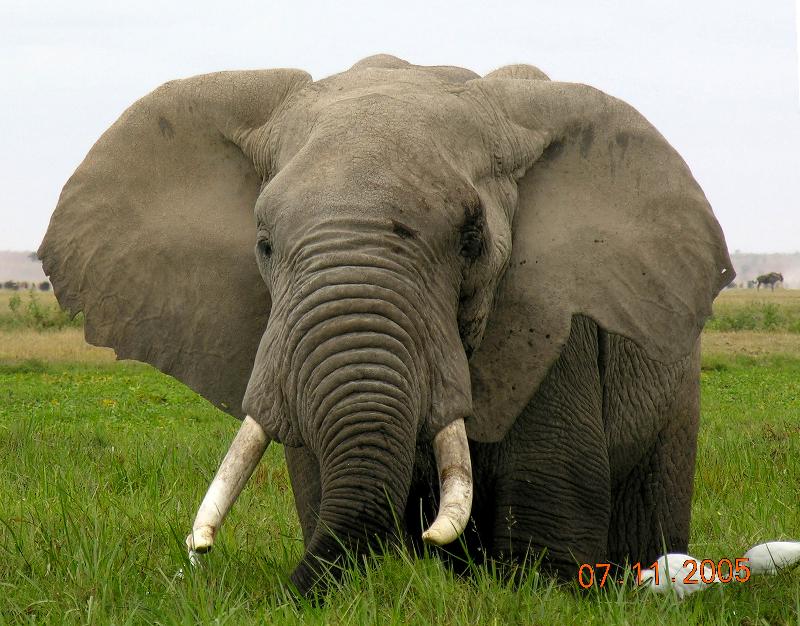 |
Slaughter of the Bulls
In the previous newsletter I reported on the upsurge of
poaching of elephants for ivory. The reality hit us hard in August with the
death of three Amboseli bulls. On August 28th, the Field Assistants received a
message that there was a dead bull out west of the Park near the Tanzanian
border. At the same time there was a report of a dead male to the east near Kimana
sanctuary. ATE Researchers Norah Njiraini and Katito Sayialel drove to Kimana; Robert Ntawuasa went to the west. Norah and Katito found a young bull who had been speared multiple times,
his tusks hacked out, and his carcass covered with branches. They could not
recognize who it was. The male in the west turned out to be Winston, a very
well-known Amboseli bull. Putting together various reports it was deduced that
Winston was shot in Tanzania and staggered across the border and died in Kenya.
The Kenya Wildlife Service wardens and rangers
investigated both of the carcasses but too much time had passed to be able to
track the poachers. Winston's Carcass  |
Winston was born to Willa of the WA family in January
1980. He was one of a sub-set of 14 calves I studied that year and so I spent
many hours with him in his first year of life. When he was killed he was 30
years old and just entering the prime of his life. What a loss and what a
waste.
At least Winston died relatively quickly which can't be
said of Keyhole, a big bull fully in his prime at 40 years old. He was the son
of Esmeralda of the EA family. Born in 1970, he was just a two-year old when we
first met him. He got his name because he had a keyhole-shaped
slit in the bottom of his left ear. A few years ago he broke the same ear and
that made him even easier to identify. Keyhole came into musth regularly and we
feel fairly confident that he sired some offspring.
Keyhole 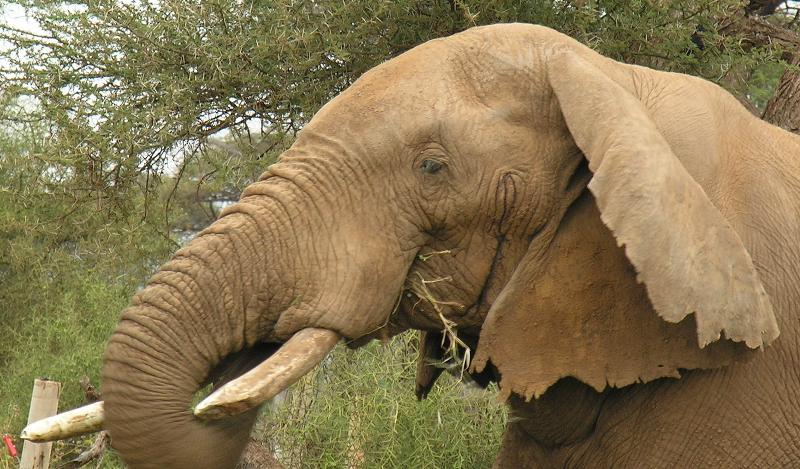 |
The poachers have devised a new and very cruel way of
killing elephants. They embed spikes or nails in a piece of wood, cover the
spikes with a powerful poison, and bury it on an elephant path. We had been
hearing about these spike traps for a while and several elephants have died
from what appeared to be wounds in their feet. It wasn't until another
conservationist sent us a photo of one of these traps found outside of Tsavo
National Park that we realized how deadly they are. SpikeTrap  |
Keyhole was reported limping badly in June. The Kenya Wildlife Service Veterinary Department was alerted and a vet came down and treated him. He did not improve and was treated again, but it did not help. It was obvious that he was in terrible agony: he could barely walk and his whole body was swollen. We are fairly sure he stepped on poisoned spikes. KWS decided to shoot him, but then he was found dead on August 18.
We can't bear to have another elephant die in this way.
Please help us fight this despicable killing method. We need people out searching for these traps. |
|
New Research Project
We are very pleased to welcome back Beth Archie who
carried out her Ph.D. research on genetics and social relationships of the
Amboseli elephants from 2000 to 2003. In July and August, Beth Archie, now an
Assistant Professor at the University of Notre Dame, came to Amboseli to start
a new project that will help ATE understand patterns of infectious disease in the
Amboseli elephants.
Katito & Beth Collect Parasites 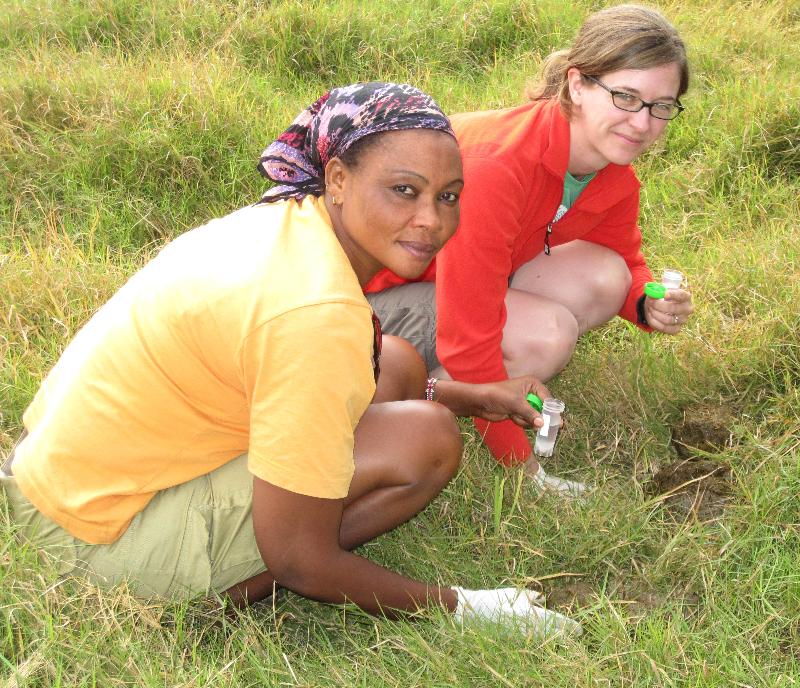 |
Currently, we know very little about how infectious
disease spreads between elephant groups, or why one elephant is more
susceptible to disease than another. This is in spite of the fact that
infectious disease can pose major threats to the stability of wild elephant
populations. Beth is working in collaboration with research scientist, Vincent
Obanda at Kenya Wildlife Service, and together they are using dung samples to
characterize the major elephant gut parasites in Ambosel--from worms to
"enteric" bacteria, such as E. coli and Salmonella. Beth and Vincent
will use their data to learn which elephants and social groups are susceptible
to these infectious agents and how elephant social relationships and ranging
patterns might drive the spread of disease across the population. Their results
will give us a first look into patterns of infection in the Amboseli elephants
and provide valuable information for managing future disease threats.
|
Wart Ear & Offspring at Swamp Edge 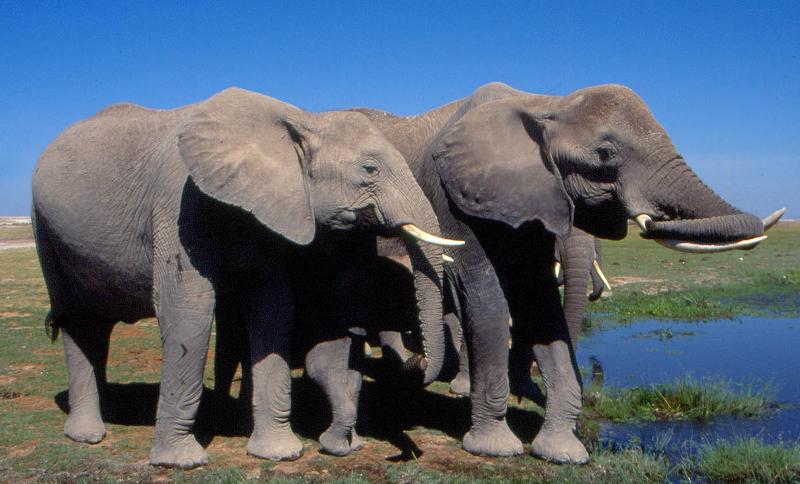 | The History of the AA Family
The AA family
holds a very special place in the Amboseli study, because it is the first
family that was sighted and photographed on the very first day of the study on September 1, 1972. It has since become one of the best-known families
in the population. I have continuous
records of its births and deaths, good times and bad times over the past 38
years. On that first day I was with my colleague
Harvey Croze and we were trying to contact as many groups of elephants as
possible and photograph at least the adult members. We drove out to the western part of the Park
crossing the causeway over the Enkongo Narok swamp. Just along the shore we found a group of
females and calves. Unfortunately, they
were disappearing into the deep swamp, but we managed to count 13 animals and
note that there were two calves less than a year old. Harvey
took some photographs of the adult females. Two days later on September 3rd we
came upon this group again and this time we were able to get better photographs
and record the age and sex structure.
To read the whole history of the AA family go to: Amboseli Trust for Elephants website
|
|
Sex Change
Recently I
spent some time with the EB family in order to get a photo of Erica's new calf
whose birth I reported on in the last newsletter. I easily found them and got
in a position to take the photos. I took several pictures of the calf exploring
her environment, following her mother, and suckling. Then somewhat to my
surprise I suddenly noticed that this calf was not a female as we had
originally recorded but was very much and very obviously a male.
Erica's New Male Calf 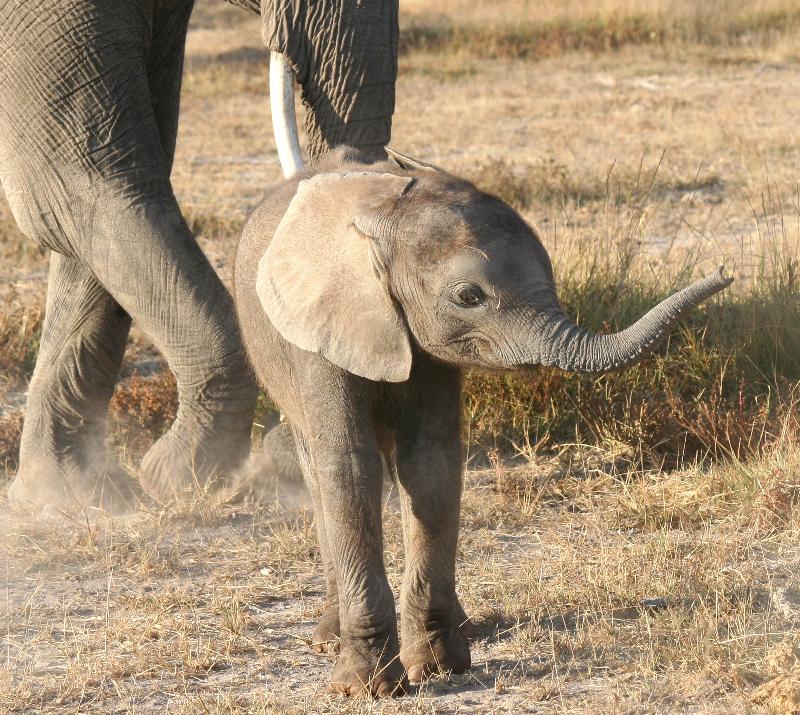 | Elephant
calves are not that easy to sex when they are infants but it's also not that
difficult for experienced researchers. However, if we don't look carefully
enough we sometimes get it wrong. A few calves have remained in the records
with the wrong sex for as long as four years before we noticed the mistake.
I am happy to report that Erica's
little male calf is doing well. I thought you might help me find a name for
him. We've used almost every "E" name in the Names for Babies books, so it will
have to be an unusual name. For each donation of $10 or more you can submit a
name. Once I get a good number I will chose the winner who will then receive a
full history of the family, a current family tree, a photo of the calf, and periodic updates during his lifetime. (This will be a great bargain for the winner, because the usual donation required to name a calf is $2500.) You
can make the donation through our website and submit the name or names through the visitors' forum or by sending us an email.
|